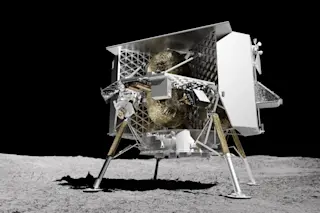Last year was the 300th anniversary of the birth of Daniel Bernoulli, the swiss mathematician and polymath, and I celebrated by stomping on his memory. Not that I actually insulted the man; I just didn't mention him when I might have in two Discoverarticles. Born in 1700, Bernoulli never had a lot to say about airplanes while he was alive, and yet these days he is widely credited with keeping every one of them in the air. In an article on insect flight last April, I almost offhandedly maintained that an airplane wing diverts air downward, and that this "downward flow lowers the air pressure above the wing, lifting it ..." Reaction from the readership was vivid. "Airplanes do not get lift by 'diverting air down!' " read one e-mail ("Subject: Enough Pseudo-Science Already!!!"). "This is third-grade science. Perhaps your writers and editors need remedial science?" Another reader: "So, your ...
The Physics of . . . Airplanes
An old, lofty theory of how airplanes fly loses some altitude
More on Discover
Stay Curious
SubscribeTo The Magazine
Save up to 40% off the cover price when you subscribe to Discover magazine.
Subscribe












